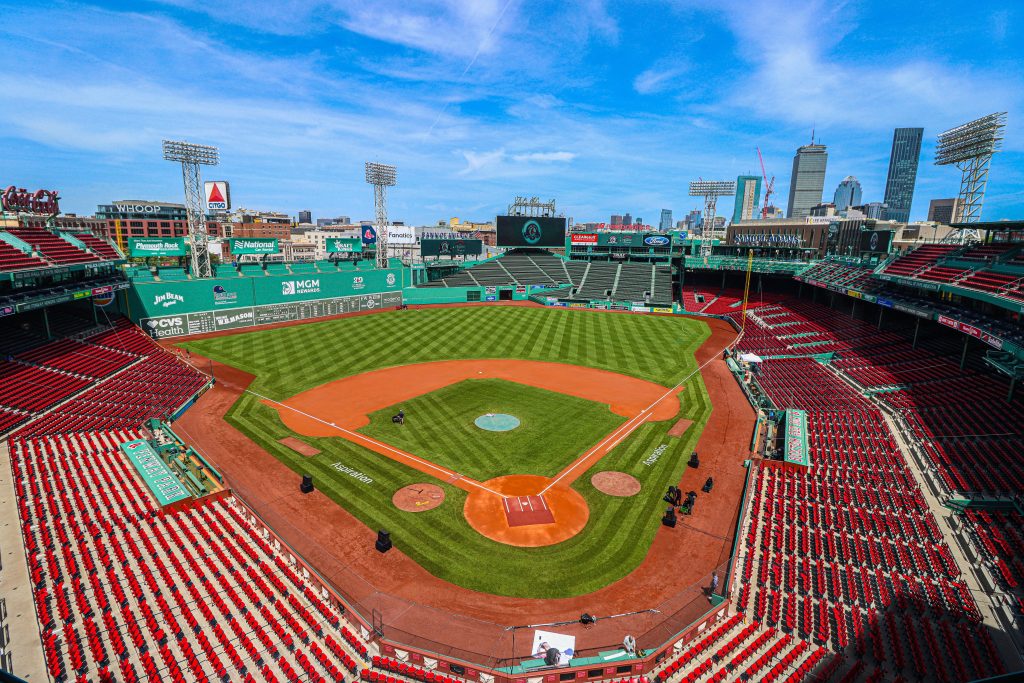Baseball holds a special place in the heart of America. It symbolizes tradition, passion and community. At the center of this beloved pastime are the baseball stadiums that serve as hallowed grounds for players and fans.
From coast to coast, the United States boasts an impressive collection of baseball stadiums, each with its unique character and history. Stadiums like Wrigley Field, Yankee Stadium and Fenway Park stand as proud testaments to the sport’s roots, with echoes of legendary players and unforgettable moments.
FENWAY PARK, BOSTON
Fenway Park, a landmark highlighted in “The Stadiums Guide,” stands as a testament to the enduring spirit of baseball in Boston, Massachusetts. Fenway has a rich history as the home of the Boston Red Sox since its opening, and it also hosted the Boston Braves for two seasons in 1914 and 1915. Over the years, Fenway has been the venue for 11 World Series, with the Red Sox winning six and the Braves winning one.
Although newer parks like PNC Park, AT&T Park and Camden Yards have better amenities, Fenway still ranks high for its nostalgic experience. Fans value the park’s rich history and tradition, making it a bucket list destination. A recent TripAdvisor poll placed Fenway as the fourth-best park to see a game, with only three newer parks ranked higher.
The most convenient way to reach the park is by taking the T and getting off at the Commonwealth Avenue stop. Fans can also explore the surrounding area, including the famous Cask ‘N Flagon bar across the street from Fenway.
YANKEE STADIUM, NEW YORK
On April 18, 1923, the gates of Yankee Stadium swung open in New York City, marking the beginning of a new era in sports. This massive concrete-and-steel colossus offered a distinct atmosphere and energy that set it apart from Fenway Park. It allows Boston residents to immerse themselves in a unique baseball culture and connect with passionate fans from another city.
Yankee Stadium’s present capacity is 47,309 for night games and 46,537 for day games. It marks a notable reduction compared to the original stadium’s capacity of 58,000 seats. Multiple factors contributed to this decrease, such as cultivating a cozier ambiance within the stadium and adhering to updated safety regulations.
There are multiple ways for fans to reach Yankee Stadium, including the New York City subway, bus, Metro-North Railroad and Long Island Rail Road. The Yankees-E 153rd Street station is located on Metro-North’s Hudson Line, and it takes around 15 minutes to reach there from Grand Central Terminal.
WRIGLEY FIELD, CHICAGO
Visiting the legendary Wrigley Field is a must for Boston residents seeking an unforgettable adventure. The journey from Beantown to the Windy City spans approximately 1,000 miles, presenting the perfect opportunity for an epic road trip.
Opened in 1914, Wrigley Field is the second oldest baseball stadium in the U.S. The home of the Chicago Cubs is renowned for its ivy-covered outfield walls and hand-operated scoreboard.
Over the years, significant additions and renovations have taken place, including the addition of the scoreboard and outfield bleachers in 1937 and the installation of lights in 1988. Other renovations have included new office spaces, clubhouses, private boxes, a food court, broadcasting booths, an elevator and a restaurant. After a century filled with renovations and improvements, Wrigley Field now has 41,649 seats.
